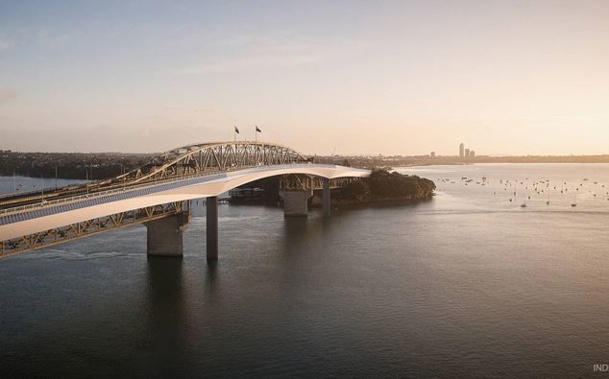
The new crossing over Auckland’s Waitematā might not include any additional lanes for cars and instead focus exclusively on walking, cycling and rail.
The Government last month released five “scenarios” for the new crossing. These included a mixture of bridges and tunnels offering a combination of new lanes for traffic, a crossing for light rail, and walking and cycling.
The Green Party accused the Government’s options of being expensive, and that in adding new traffic lanes they did not adequately take climate change into account.
Transport spokeswoman Julie Anne Genter asked Transport Minister Michael Wood whether the Government had in the past considered a crossing that included no additional car lanes - and if so, why it had not put this out for consultation.
Wood responded that yes, the Government had considered this - but he went further, saying this was still a live option, despite it not being one of the options currently out for consultation. This is because aspects of the five options currently out for feedback could be mixed and matched to form the Government’s final plan.
“Yes, Waka Kotahi NZ Transport Agency advises me that active transport and/or rail with no additional car lanes is being considered within the announced options.
“The scenarios put out for consultation represent potential solutions for crossing the Waitematā and parts of one scenario may be packaged up with another to form the recommended option. No decisions have been made on what should be constructed,” Wood said.
A spokesperson for Wood said the “scenarios put out for consultation represent potential solutions for crossing the Waitematā” and that “parts of one scenario may be packaged up with another to form the recommended option. All scenarios provide five general traffic lanes in each direction at all times.
“Collectively the scenarios offer an integrated solution for a more resilient network and movement for all modes for years to come,” the spokesperson said.
Genter said the Greens were “relieved to see that a sensible option may still be investigated”.
“The best option in the short term is to fast-track rail to the Shore and immediately allocate dedicated bus and bike lanes on the bridge,” she said.
She said in the longer term “a separate bridge for rail, cycling and walking may be the best solution”.
”Now, more than ever, we need transport solutions that are good for people and the climate,” she said.
The Government fast-tracked construction of the new crossing after its ill-fated attempt to build a dedicated walking and cycling bridge across the harbour.
However, the extremely negative reaction to that bridge suggests not including additional road lanes in the crossing is unlikely.
Wood’s spokesperson noted that a large number of people who use the current bridge are not Auckland commuters but people using the bridge to travel beyond Auckland.
“Forty per cent of the 250,000 people who currently cross the harbour bridge every day travel beyond Auckland.”
The harbour crossing is now tied into a wider integrated transport plan for Auckland, which ministers hope will link the crossing to the current Government’s plan for light rail.
The National Party supports a second crossing but has said it doubts the current Government’s ability to deliver it.
Wood’s spokesperson said the project would “consider all modes together” as part of an “overall transport network approach”.
The Government says feedback on the five scenarios will help shape a decision on its preferred option for the crossing, which will be confirmed in June 2023.
Take your Radio, Podcasts and Music with you









